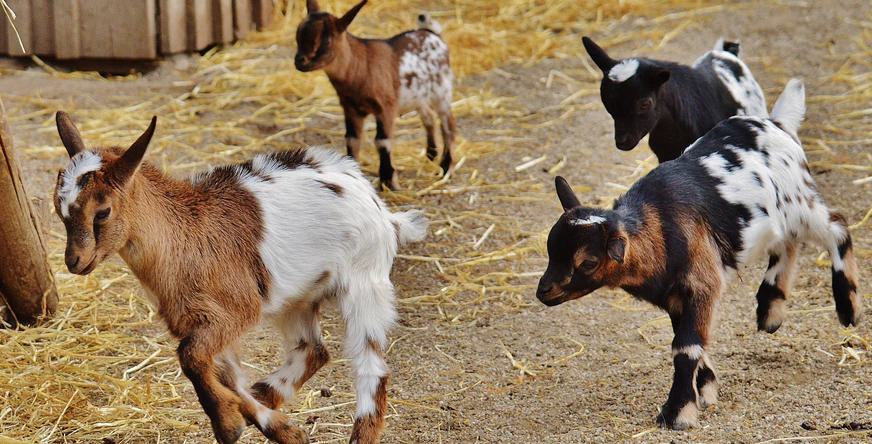Americans have experienced growing food price inflation in grocery stores over the last two years. Ground beef at Walmart was priced on Thursday at $5.64 per pound. Sirloin steak is $9.94 per pound. These high prices that consumers pay at the grocery store can represent an opportunity for farmers. Ranchers with hundreds of acres are running beef cattle, but meat goats may be the best alternative for small farmers and landholders.
The Alabama Cooperative Extension Service on Tuesday released a report stating that the meat goat industry is a growing aspect of agriculture in Alabama.
Valens Niyigena, an Alabama Cooperative Extension System animal sciences and forages specialist, said the meat goat industry is booming.
“The meat goat inventory for Alabama in 2021 totaled 47,000, a 2% increase from the year before,” Niyigena said. "The U.S. spent $133.82 million in December of 2021 on frozen, fresh and chilled sheep and goat meat. This was a 44% increase from December of 2020."
Goats are an affordable option for small landholders who want to raise their own meat but do not have the forage quantity or quality to fatten a couple of beef steers to 1250 pounds (or the freezer space to hold all of that meat if they did).
Goat meat is a staple of many foreign cultures in places like Africa, Latin America and Spain. With the number of immigrants from those countries rapidly increasing, goat meat is becoming much more popular in the U.S.
During the coronavirus lockdown, many small landowners began raising goats to stay busy at home. As a result, the demand for meat goat breeding stock has increased tremendously in the last two years.
“Currently, Alabama has the third-highest timberland acreage of the 48 contiguous states,” Niyigena said. "Goats are used to clear the understory vegetation of woodlands instead of non-ecologically friendly methods such as controlled burning or herbicides."
Many goat farmers in Alabama also raise goats with other livestock species on the same pastures to optimize forages utilization and weed control.
The state needs more farmers, particularly young farmers. The average age of goat farmers in the U.S. is 55 years old. This is a major concern for people like Niyigena. Goat farming, like cattle ranching and farming in general, faces a crisis as its older farmers leave the workforce leading to a potential decline of the future industry due to the age of the farmers.
Niyigena said that young people are encouraged to enter the goat industry because it is much simpler and less time-consuming than raising larger livestock like cattle.
Goats also fit well into a multi-species grazing system with cattle, horses, or sheep. Goats, like other ruminants, will both browse for leaves on bushes and graze on grasses. Where forage is plentiful cattle and sheep would prefer to graze, while goats and deer prefer to browse meaning that, if forage is plentiful, goats complement the foraging tendencies of cattle and sheep well.
There are a few aspects of goat farming that new and experienced farmers need to know and handle before producing exceptional livestock.
The first is if there is sufficient forage and water available for the livestock. Is there fencing on the property that can keep goats in and barns to keep them out of severe weather? What threats do livestock face from both coyotes and domestic dogs and how are they controlled?
If a farmer has the time to add goats to their property as well as the fencing, forage, water source, and shelter, there are other questions to answer.
What kind of goats to buy? Which goat is the best option for each operation? Where to buy goats? Do certain producers have a history of sickness in their livestock?
A farmer or landowner should carefully research these topics in order to determine the best types of goats, sicknesses, feeding options, and biosecurity measures before beginning production. Goats are susceptible to parasites such as intestinal worms. A farmer raising goats should plan to deal with threats from worms.
They also need to prepare for caring for the goats in winter. A field may have plenty of forage from April 1 to Oct. 31 when the sun is shining and the grass is growing, but after the first killing frost and the onset of winter days the goats still need to eat, and depending on the forage base, the stocking rate, and the grazing system used (rotational versus continuous or cell grazing with many pastures) goats might need to be supplemented with hay and/or grain for that period between Nov. 1 and March 31 as well as in any unexpected droughts. Figuring out those costs needs to be calculated when preparing a budget for a potential goat-raising enterprise.
Producing the best livestock is important to every farmer. Farmers should contact the local Farm Service Agency and Natural Resources Conservation Service offices to determine available resources for their land. Niyigena also said that farmers should contact their local Extension Agent to provide recommendations before beginning. Agents can help novice goat producers to double-check that research and operations are handled correctly.
More information about meat goat production can be found here.
To connect with the author of this story, or to comment, email brandon.moseley@1819News.com.










